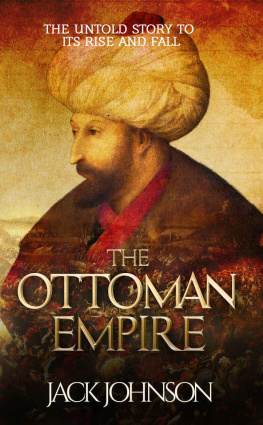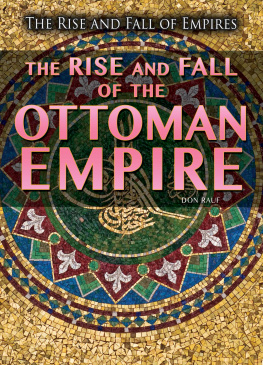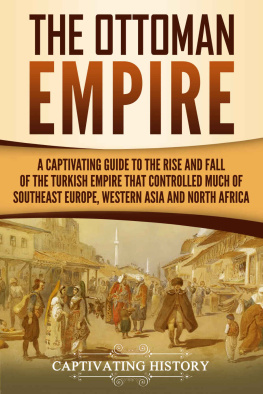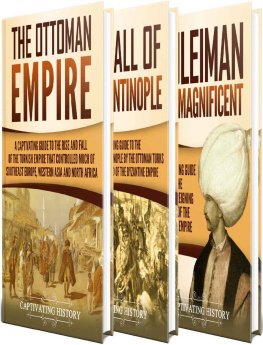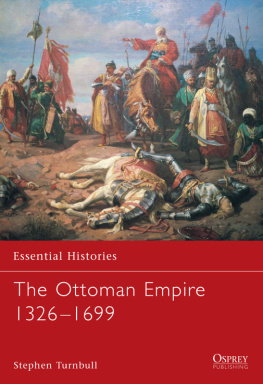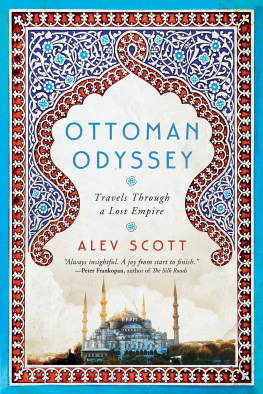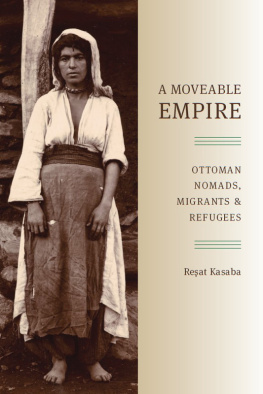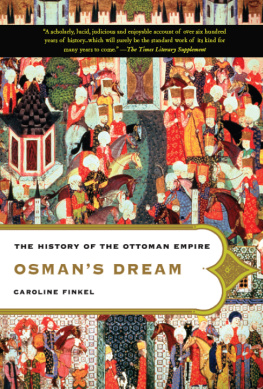The Ottoman Empire: The Untold Story to Its Rise and Fall
By Jack Johnson
Copyright 2016
Table of Contents
Introduction
The Ottoman Empire officially began in 1299 and grew to be one of the longest-lasting empires this world has seen. This empire was a monarchy, ruled by sultans who all descended from Osman I. Holding the largest concentration of Muslims, the rulers did not force non-Muslims to convert, something new for this time period.
The Ottoman territory started in an area that was known as Anatolia and grew to encompass territory in Europe, Africa, and Asia. The empire consisted of Arabs, Kurds, Persians, Armenians, and other minority groups. The groups were allowed to live in relative peace as long as they did not oppose the sultan's actions. During their Golden Age, the Ottoman Empire was quite powerful and culturally advanced.
Later on, the empire lost power for three main reasons. First of all, the military was unprepared and unable to protect the extensive land that was under Ottoman rule. The army was traveling by foot and could not reach borders very quickly. Secondly, the sultans were less capable of leading. After the first few sultans, it became less common for the sultans to go out on the battlefield and lead their army. The sultans instead turned their attention to the harem women and the empire's treasury. Because the title of sultan was inherited by blood not by capability, the sultans who were chosen were not always the best for the empire's welfare. Last of all, those within the empire began rebelling, including the Janissaries.
After nearly seven hundred years as a ruling authority, the Ottoman Empire became a democracy and was abolished in favor of the Republic of Turkey in 1922. While the Ottoman Empire contained much more territory than that of modern day Turkey, the terms "Turkey" and "Ottoman Empire" are often used interchangeably. While the Ottoman Empire is not a power any longer, the empire did leave the world with some architectural and literary advancements. For example, the Hagia Sophia, a very famous mosque, was built by the Ottomans. They are a people who will be remembered for their accomplishments even though they no longer exist as an empire.
In chapter one, the origins of the Ottoman Empire will be explained. How did the empire begin? Where did it start? Next, chapter two will describe the lives of the first seven sultans who were integral in shaping the Ottoman Empire and helping it gain territory to expand.
Chapter three describes the daily life in the Ottoman Empire. What did the people do in their free time? How did they interact with other people groups? Were they an advanced culture or were they backward in their ways? What was the main religion of the country? How did the government interact with the people? These questions will all be answered in chapter three.
Next, chapter four describes the three emperors in charge during the time of the Ottoman Golden Age. What actions did those emperors take that made the Ottoman Empire so successful during that time?
Chapter five paints a picture of the Ottoman Empire as it declined and headed toward a collapse. Could it have been prevented? What mistakes did the sultans make?
Chapter six gives a short snapshot on the Tanzimat reforms that briefly gave the empire hope for a return to the glory days. Last of all, chapter seven describes the final collapse and dissolution of the empire. The last few sultans are described along with how the empire became a republic.
Chapter 1: Origins of the Ottomans
While the Ottoman Empire was not officially recognized until the 13th century, the Ottoman Empire actually sprang from various people groups that existed long before. What do we know of these people groups before they had their own land?
Early Records
The earliest records indicate the Turks' presence around 2000 BC. They were around before, but the first written record sets them in this time period. The Turkish tribes are referred to by a term similar to our word for Hun, and the group is noted to be nomads. They wandered from place to place, moving as the game moved, and having no real home. This group wandered the area between Altai Mountains and the northern edge of the Gobi Desert(Sansal).
Some Turks in this area founded the Gokturk Empire. This empire was " the first to employ the word "Turk" in their official state name" ("Military"). The empire had leaders called Khan(male) or Khatun(female). The Khan was in charge or delegations between people groups and with other nations. These leaders were seen as the divine leader, and their ideas and desires were not questioned. They were treated as little gods.
During this empire's time, in the 6th century AD, the Turks moved to Orkhon Valley in Central Mongolia. The founder of the Gokturk Empire is a mystery. His name is Bumin Khan, but little else is known about him.
The first written records of the Turks' own writing are found in various regions of central Asia. The stone tablets describe both political and social aspects of the Turks during the 8th century AD. This 8th century AD is precisely when the Gokturk Empire was ruling, which is how we can begin to know about the Turkish history.
The Gokturk Empire collapsed, causing some groups to split off and migrate to other parts of the world. However, a majority of the Turks who had been part of the Gokturk Empire stayed together, allowing for the next step in their lives, which was a step of success.
During this time of severance among the Turks, Islam was spreading, and the Turks came into contact with the religion. The group of Turks left behind embraced Islam and began to create armies, striving for leadership positions and honor. For most of the ninth century, the Turks ruled an area called Baghdad until the Seljuks began rising in power.
An important moment in world history came in the year 1072 when the Seljuks beat the Byzantines which allowed the Turks to infiltrate the Anatolia area (Ahmed). As the Turks pressed into Anatolia, the Byzantines fought back and called to the Mongols for help. The Mongols ruled remotely by using satraps; however, the Turks were not going to allow the Mongols to retain any power.
The Mongols were trying to capture and defeat as many nations as possible. The Mongols were cruel toward their conquered cities. One example is when the Mongols conquered Baghdad, " slaughtering hundreds of thousands of civilians and burning down the Grand Library of Baghdad. The victors rolled the caliph inside a rug and trampled him to death with their horses" (Szczepanski). The Mongols were a cruel people group, and the Turks were determined to fight against that cruelty.
A n important battle in 1261, the Battle of Ayn Jalut, was a turning point in who held the power. The Mamluks, a group of slaves who fought on behalf of the Turks, used their advantage of faster horses and knowledge of the terrain to to beat back the Mongols. The victory in this war helped the Turks settle their power over the area while the Mongols lost power.
The Islamic beliefs of the Turks played a large role in their success. Before Islam was introduced to them, they were simply peaceful nomads, wandering with no goal. However, the Islamic faith helped unite the Turks and give them a common goal to conquer other civilizations. Values such as strength, humility, and charity were valued among the group of nomads. These battles and struggles to push forward and come into their own land was what lead to the rise of the Ottoman Empire which will be discussed in chapter two.
Anatolia
The word Anatolia comes from the Greek language and means "east" or "sunrise." ("Anatolia," Wikipedia). What do you think when you see a sunrise? Many think of a beginning or of new hope. While the Turks did not name the land, it has that same meaning for them and was the land that gave them the beginning of their new empire.

